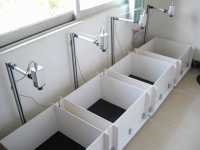Chromosomal Localization of Genes Through Pulsed-Field Gel Electrophoresis Techniques
互联网
互联网
相关产品推荐

GEL/GEL蛋白Recombinant Suregada multiflora Ribosome-inactivating protein gelonin (GEL)重组蛋白rRNA N-glycosidase;allergen Gel m RIP蛋白
¥2616

脉冲多普勒血流计Pulsed Doppler Flowmeter
询价

开场视频分析系统(inner open field )
¥20000

oxyR/oxyR蛋白/oxyR; Probable hydrogen peroxide-inducible genes activator蛋白/Recombinant Streptomyces viridosporus Probable hydrogen peroxide-inducible genes activator (oxyR)重组蛋白
¥69

gel4/gel4蛋白Recombinant Neosartorya fumigata 1,3-beta-glucanosyltransferase gel4 (gel4)重组蛋白Glucan elongating glucanosyltransferase 4蛋白
¥2328
相关问答

